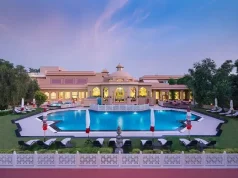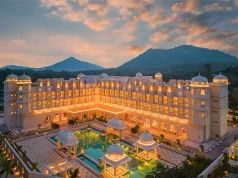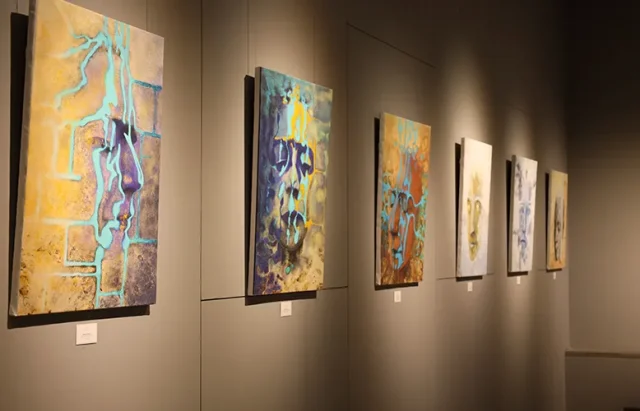
The Gyan Museum, a cultural space housing the private collection of the late Gyan Chand Ji Dhaddha (1940–2004), has opened an exclusive exhibition showcasing the work of renowned British sculptor and artist Andrew Horsfall. Dedicated to preserving artistic heritage and creative expression, the museum highlights the evolution of Horsfall’s work across various mediums. Running through May 30, 2025, at the Gyan Museum’s Jaipur location, the exhibition is housed in the Gyan Museum’s 750 sq. ft. exhibition gallery offering an immersion into the depth and innovation of Horsfall’s sculptural and digital artistry.
“The exhibition celebrates 25 years of Andrew Horsfall’s artistic journey, showcasing his profound mastery in bronze and sandstone. His acclaimed works, including the ‘Beggar Series’ and ‘Bone Heads,’ delve into themes of victimization, egoism, and self-righteousness, sparking reflection and discourse,” says Arun Dhaddha, Director of the Gyan Museum. “We are also presenting the ‘Break the Glass’ series, an exclusive collection crafted from gems, diamonds, gold, and platinum, inspired by Andrew’s experience as a father of seven and reflecting the challenges faced by today’s youth. Additionally, the exhibition highlights Andrew’s latest explorations in digital portraits and 3D-sculpted blue pottery masks, marking his ongoing evolution as an artist.”
Nestled in the heart of Rajasthan, the Gyan Museum is a tribute to the late Gyan Chand Ji Dhaddha (1940–2004), a visionary collector, gemologist, and naturalist whose lifelong passion for antiquities and artefacts led to the creation of one of the most unique and important private museums in India. Housing over 2,500 treasured pieces spanning more than 3,000 years of history, the museum is a gateway to the past, offering a space where knowledge meets artistry. In this spirit, the exhibition of Andrew Horsfall’s work aligns with the museum’s commitment to preserving and presenting creative mastery. Having long engaged with Rajasthan’s rich traditions, Horsfall relocated his workspace to Jaipur in 2020, allowing him to expand his creative boundaries and explore new dimensions with unparalleled depth.
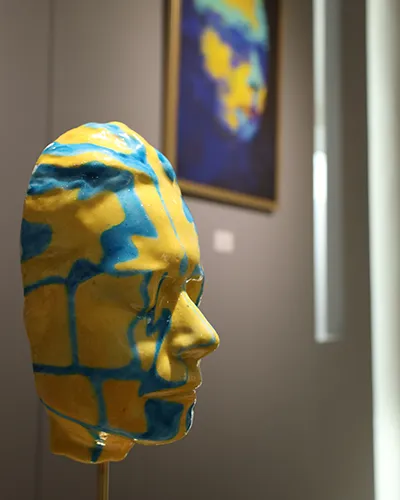
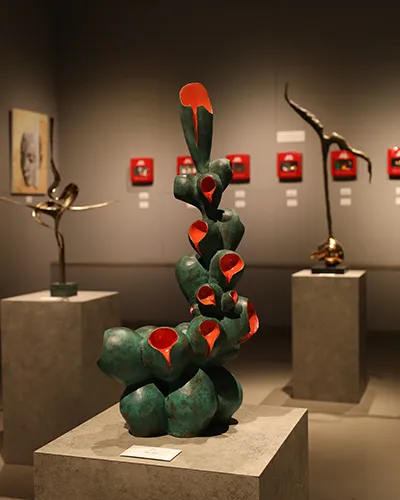
Horsfall’s artistic practice is deeply rooted in his lifelong dedication to sculpture and drawing, with a profound connection to the materials he works with. His relocation to Jaipur has allowed him to embrace new inspiration, pushing the boundaries of both traditional and contemporary artistic mediums. The Andrew Horsfall exhibition at the Gyan Museum delves into the complexities of human experience, societal constructs, and the contradictions of survival. The artist explores themes of resilience, exploitation, overprotection, and identity through a thought-provoking lens. A deconstructed cross, “Metamorphic Crux” reassembles its components in a fragmented manner. The piece invites viewers to reflect on the evolving nature of belief, how it shifts through history, and how personal experiences reshape spiritual meaning. “Gloria” emerges as a figure navigating a world left in ruins by human excess. Cast in bronze, the piece speaks to resilience and the enduring hope that persists despite devastation. A poetic reflection on nature’s relentless push toward growth, “Eggo Seed” embodies the struggle for survival. Referencing Darwinian competition, the piece portrays natural selection of the fittest reaching for sunlight. In a compelling trilogy—Ego is Hunger, Money Monster, and Beggar 3—the “Beggar Series” dissects the ethics of giving and receiving. These bronze sculptures expose the duality of begging, where survival, manipulation, and systemic exploitation intertwine. “Ego is Hunger” embodies the contradiction of value through suffering. The figure acknowledges its role as both victim and instrument, gaining worth through the misfortune that defines it. A grotesque yet essential entity, the “Money Monster” thrives on others’ despair but simultaneously provides them sustenance.
“Working with Arun and the Gyan Museum has been truly inspiring,” says Andrew Horsfall. “The keen sense of curation, meticulous attention to detail, and thoughtfully designed contemporary gallery has made the collaboration seamless. Their passion for presenting art in new and meaningful ways makes the experience both rewarding and enriching.”
A critique of modern parenting, Horsfall’s “Break the Glass to Play” examines how overprotection alters childhood. Presented in bronze, silver, gold, and precious stones, this seven-piece series encases traditional childhood play within rigid materials, representing the constraints imposed by an over-cautious society. Each piece, named—Autocrat, Predator, Mental Health, Sexual Harassment, Rebellion, Obesity, and Narcissism—explores different aspects of how restriction and sheltering shape adulthood. The work encourages dialogue on the balance between safety and experiential learning. In a contemporary reinvention of Jaipur’s iconic blue pottery, Horsfall’s 19-piece series of Masks preserves individual faces in an ancient medium, capturing the essence of identity and impermanence. Using 3D scanning technology, the portraits blend traditional craftsmanship with modern techniques, offering a new perspective on how personal histories can be memorialized. Masks can also be commissioned in bronze or carved from precious stones, such as Moss Agate, emphasizing the intersection of heritage, nature, and innovation.
“Curating Andrew Horsfall’s artistic odyssey was a deeply fulfilling endeavor. I collaborated closely with Andrew and the gallery director, gathering their input on the story they wanted to convey through this celebration of 25 years of his work,” says Curator Nikita Sharma. “Together, we shaped an exhibition that seamlessly blends his bronze and sandstone sculptures with his digital explorations, including 3D-scanned faces and blue pottery masks. My focus was to present his journey in a cohesive and engaging way, ensuring every piece resonated with his vision and the audience alike.”


